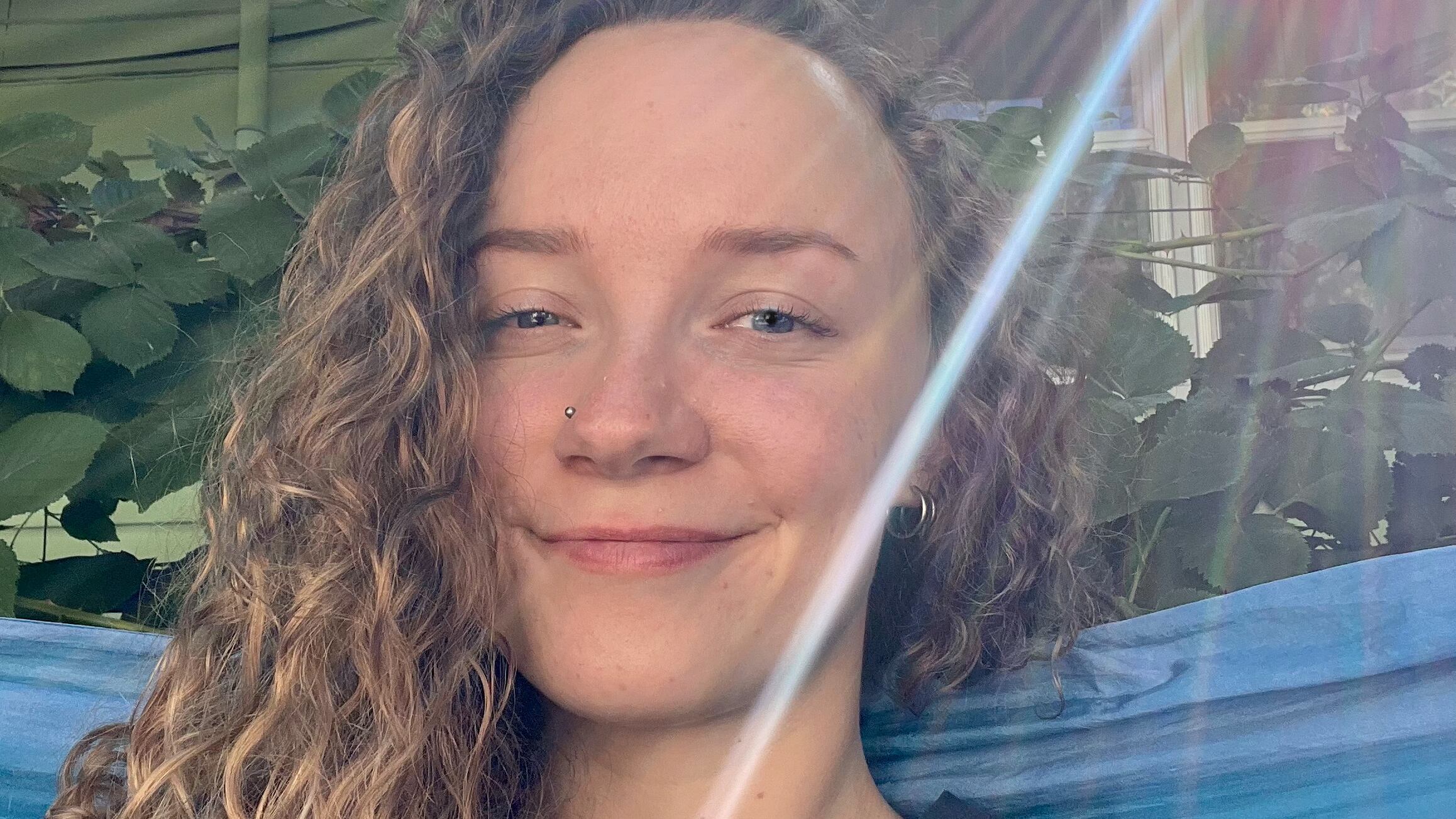Zoë Buhrmaster knew what she needed to do from the minute protesters supporting Palestine broke into the Portland State University library.
Buhrmaster, 25, is a senior majoring in anthropology and the news editor of The Vanguard, PSU’s student newspaper. Across the country, as campus protests for Palestine took control of university buildings, student journalists have provided some of the most intimate and perceptive coverage of the standoffs—in part because they are covering their peers. Vanguard reporters joined those ranks April 25, covering demonstrations for Gaza on the South Park Blocks. When protesters broke into the library April 29, Vanguard reporters stayed on scene around the clock until well after police raided the building May 2.
Much of their coverage came in the form of videos posted to Instagram and TikTok. Viewers who watched the broadcasts were tuning in to some of the few journalists in regular communication with the people inside the library. That meant Vanguard updates typically contained statements from university president Ann Cudd and replies from the occupiers.
The damage done to the library is so extensive that Cudd says the building won’t open until the fall semester. And Buhrmaster, who in the occupation’s endgame worked a 30-hour shift, is still trying to process what she saw. As The Vanguard’s newsroom prepares a May 20 special edition, Buhrmaster sat down with WW in a cafe three blocks north of the boarded-up library to reflect on the story.
WW: When did your team realize that protesters had taken over the library?
Zoë Buhrmaster: We were there when they entered the library. We knew someone had broken a window and entered the library.
What was your reaction?
I think I wasn’t surprised. I’ve been staying up to date on the other protests happening on campuses across the U.S. I was surprised that it was the library, if anything.
Were you on scene when police began sweeping out the library?
I was. Police showed up at 6:05 am. About six cop cars showed up and surrounded the library. They immediately started putting tape around the perimeter and they started broadcasting the message, roughly, “Anyone who wants to leave can leave now.” About four people left the library around the backside. The bullhorn message kept repeating for…I want to say an hour. And then at that point we realized that vans had started to pull up behind the library. So I went around to the back and saw chainsaws.
Police were using chainsaws to cut through the door?
Yes. It was hard to see. But that’s only what I can assume.
How much sleep did you get each night?
I showed up there Wednesday morning around 11 am. I left the premises at 5 pm. on Thursday. I haven’t pulled that long of an all-nighter since I was a teenager. We didn’t have caffeine. We honestly were fairly ill-prepared. I camp often, so I had blankets, chairs and a sleeping mat in the back of my vehicle, which was very convenient. But otherwise we were just awake. I think the nature of the situation is what kept us up.
Were there any developments that your team broke that you’re especially proud of?
We had a couple reporters who had a lot of contacts who were on the inside. So we had a good idea of their responses to messages the university was putting out. And I think that’s something not a lot of other organizations were privy to. I was proud that we were able to develop a dialogue between what the university was saying and what the protesters were saying, although they often canceled each other out.
Were you ever able to figure out who was telling the truth?
We are still in the process of figuring that out. [Laughs.] Our team is doing a lot of fact checking right now.
How much did your social media audience grow over a week?
Exponentially. I believe in the matter of four days, we gained like 4,000 new followers on Instagram. Similar on TikTok. It was kind of wild.
Did you receive any threats?
Someone posted on their Instagram story tagging us in a photo of them with their hand on the steering wheel, saying, “on my way, middle finger emoji, @psuvanguard.” About an hour later, a car drove into protesters and the driver sprayed bear mace into the crowd. [Ed. note: Police arrested the driver and placed him on a medical hold.] We were fortunate that our team came out unscathed, but that was probably the most intense threat.
Is there anything about the dynamics of what you saw over the past week that you think the larger city doesn’t understand?
I think a large misconception was the vibe of the protest. What I saw when I was there was dancing. I saw a barbecue. Protests, at least in my experience, have a tendency to bring in violent characters. But the large feeling there was community-based. They held an open mic on Wednesday night. They held a die-in, where everyone lay on the ground. Someone from Gaza reached out to them and was in support.
There’s a tension between what you’re describing and the level of property damage that was left inside the library. How do you reconcile that?
That’s a great question. I think the protesters’ largest message on that point was, “How does this pale in comparison to what’s going on in Gaza right now?” which is an intense statement. I also know from people I talked to who went inside the library that there were efforts to not ruin the books, to not ruin the school supplies.
Now our library is closed until the fall. It’s not easy to totally condemn and not easy to totally be in favor of, especially speaking as a student who uses the library myself. Why the library? Why not another building that doesn’t directly impact students so much?

